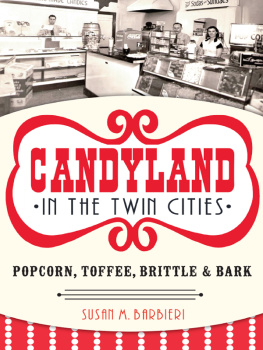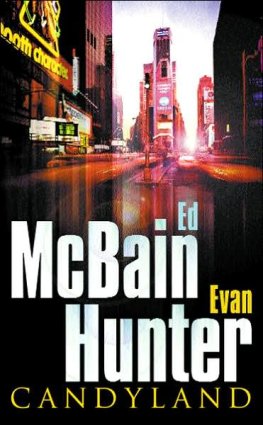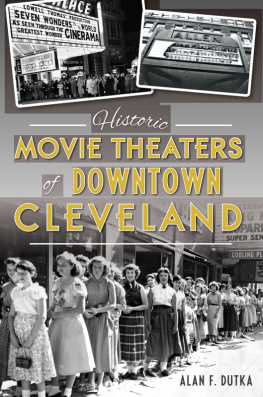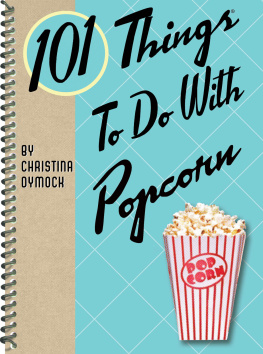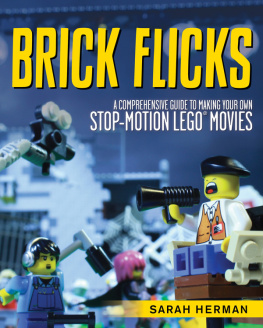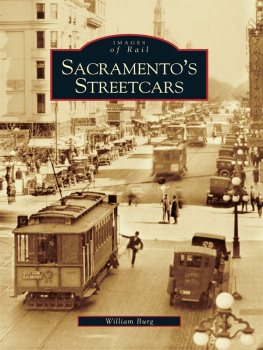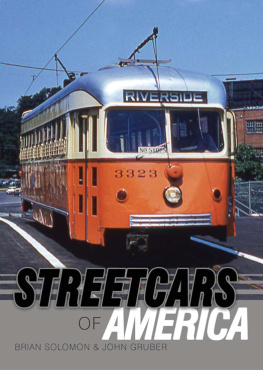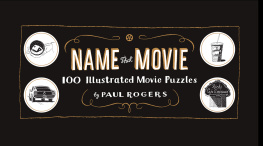

Published by American Palate
A Division of The History Press
Charleston, SC 29403
www.historypress.net
Copyright 2014 by Susan Barbieri
All rights reserved
All images are courtesy of Candyland unless otherwise noted.
First published 2014
e-book edition 2014
ISBN 978.1.62584.855.0
Library of Congress Cataloging-in-Publication Data
Barbieri, Susan.
Candyland in the Twin Cities : toffee, turtles, brittle and bark / Susan Barbieri.
pages cm
print edition ISBN 978-1-62619-363-5 (paperback)
1. Candyland (Store) 2. Retail trade--Minnesota--Saint Paul--History. 3. Specialty stores--Minnesota--Saint Paul--History. 4. Candy industry--Minnesota--Saint Paul--History. 5. Candy--Minnesota--Saint Paul--History. I. Title.
HF5429.5.S74B37 2014
381.4566415309776579--dc23
2014017901
Notice: The information in this book is true and complete to the best of our knowledge. It is offered without guarantee on the part of the author or The History Press. The author and The History Press disclaim all liability in connection with the use of this book.
All rights reserved. No part of this book may be reproduced or transmitted in any form whatsoever without prior written permission from the publisher except in the case of brief quotations embodied in critical articles and reviews.
To the tiny girl who loved the ant tunnels, giant bubbles and paper pulp projects at the Childrens Museum and going around the corner to get a little bag of jellybeans afterward. May she always live inside you.
Contents
Acknowledgements
Special thanks to David Hanners for tipping me off about this project and to Gary Brueggeman, Roger Wheeler, Rodney Ripley, William Hunt and Robert Kosmalski for sharing their vivid memories of downtown old St. Paul. And a big thank-you to Doug and Brenda Lamb for their patience, their stories and, above all, their dark chocolate haystacks.
Introduction
The aroma is almost tangible enough to require its own calorie-disclosure label. But calories are the last thing on your mind as you follow where your nose leads you on its quest to find the source. You pick up the scent of hot popcorn quick-tossed with a blend of brown sugar, butter and corn syrup. Your olfactory senses detect something else, tooa silky, decadent undercurrent of cocoa. This might be velvety milk chocolate over cashews, bittersweet dark chocolate mixed with finely shredded coconut, caramel and nut snappers bathed in chocolate or rich homemade squares of fudge.
If its a busy day at Candyland, you stand in line to get in. Then your sense of sight takes over, and it seems youve fallen into a childrens picture book where the color palette goes far beyond the basic fairytale rainbow, and every sugary shape seems imbued with whimsy. Theres a wall of color-sorted candies. Sugar crystals sparkle from jellied fruit wedges and crystal lollipops. Gummy worms practically wriggle in sweet delight behind the clear case. Snowy white sprinkles dust piles of nonpareils.
All of a sudden, youre five years old and dont know where to look first. (Imagine how your child or grandchild feels.) There are speckled jawbreakers the size of billiard balls, cherry- and blueberry-tinted and flavored popcorn balls, Hot Tamales, melt-away mints, pastel taffy chews, roasted nuts, chocolate-dipped pretzels and giant spiral lollipops with ribbons of primary colors.

Chocolate Gems in rainbow colors.
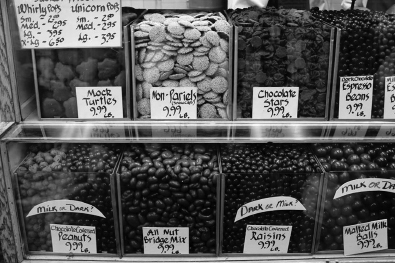
Tough decision: milk chocolate or dark?

Jellied fruit slices dusted in sugar.
Theres a colorful rhythm to the seasons inside the store. Maybe its Christmastime, and the gummies and jellies are red and green. Or its February, and the place is awash in red and pink and you can get chocolate-dipped strawberries for your love. If its March, treats are shamrock greenif its April, Easter pastel. July brings patriotic red, white and blue, and October finds the store vivid in crisp, autumnal oranges and redsaccented with a little licorice black for Halloween.
Scientists say that we are hard-wired to crave sugar, fat and salt. The only proof you need is to watch a Candyland dipper laboriously coating rippled potato chips in chocolate, one by one, and know that people do buy them.
It seems remarkable that a simple popcorn and candy shop that opened its doors in downtown St. Paul in 1932 during the Great Depression should still be in existence today. Then called Flavo Korn, the store opened at a time when dismal shantytowns dotted the land, and Franklin D. Roosevelt was elected president in the hope that he could solve the countrys economic woes. St. Paul was as down-at-the-heels as every other major American city.
For Candyland, survival entailed navigating not only the Great Depression but also a world war, the end of the streetcar system, the decay and eventual demise of the downtown movie palaces and the migration of families to the suburbs. Survival came despite the development of downtown skyway systems that lured pedestrians away from city streets and into climate-controlled walkways. Survival came despite devastating rearrangements of downtown St. Pauls city map, including the development of Interstate 94, which severed the downtown business district from the state capitol and caused potential downtown shoppers to relocate farther away.
When the city closed the old Seventh Street to traffic and created a pedestrian mall between St. Peter and Wabasha Streets just around the corner from Candyland, the Loop that once gave downtowns traffic pattern some cohesion (and young people of the 1950s, 60s and 70s a place to cruise) became fragmented and incoherent. Ask old-timers about the Loop, and they struggle momentarily to reconcile todays downtown with the one that lives in their memories; they will then go on to vividly describe a route that no longer exists that went past landmarks that are long gone.
Any one of these historical developments in downtown St. Paul easily could have killed off a small shop like Candyland; countless other mom and pop stores have come and gone in the past eight decades. There were plenty of reasons for people to abandon downtown. But candy cravings are eternal, and popcorn, it seems, is recession- and depression-proof.

Chocolate-dipped strawberries for Valentines Day.
Suburban migration and the advent of television caused dramatic social change after the end of the war, and St. Paul wasnt immune to those trends. In the 1950s, attendance at movie theaters dropped, along with popcorn consumption. But as television became the new big thing, and people began eating popcorn at home in front of their favorite shows, the snack enjoyed resurgent popularity. The invention and subsequent widespread adoption of the microwave oven gave popcorn yet another boost.
Candyland went from a place frequented by downtown office workers and moviegoers to a destination for those who had moved to the suburbs. Under owners Arnie Kelsey and now Doug and Brenda Lamb, the business survived and thrived, eventually expanding its offeringsalthough popcorn remains a mainstay of the business to this day.
Next page
